In development
General Program
The VIII WFER will have a previous training day and different activities with recognized international experts. We encourage you to check out the program to identify the various activities and contents and make the most of your WFER experience!
High Level Round Table C: Role of consumers in the energy transition
Universal Energy Access (U)
- Level 5: Ichma room 1
- Save to Google Calendar
- Save to My Agenda
 Jana Haasová
Jana Haasová
High Level Round Table D: Regulating the nascent hydrogen sector
Energy Transition (E)
- Level 5: Ichma room 2
- Save to Google Calendar
- Save to My Agenda
In development
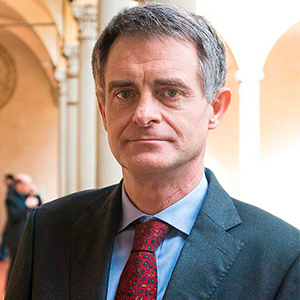 Alberto Pototschnig
Alberto Pototschnig
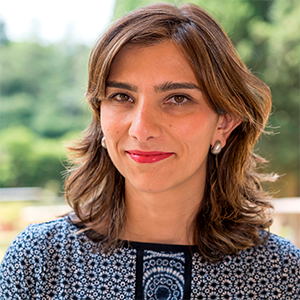 Ilaria Conti
Ilaria Conti
Key Note Speech I: Geopolitics, Energy Transition and Markets and Regulators Challenges
Institutionality (I)
- Level 8: Naciones room 1 and 2
- Save to Google Calendar
- Save to My Agenda
In development
 Carlos Pascual
Carlos Pascual
XII ARIAE General Assembly Meeting
Institutionality (I)
- Level 4: Manchay room
- Save to Google Calendar
- Save to My Agenda
The Ibero-American Association of Energy Regulators (ARIAE) celebrates its 12th General Assembly meeting.
ARIAE is a private non-profit organization that represents a forum among specialists from regulatory bodies to discuss energy regulation matters. The association was established in Buenos Aires in the year 2000, and obtained its legal personality in March 30, 2016 (The Founding Act of December 16, 2015 was included in the Registry of the Ministry of Interior of Spain Section: 1st, National Number: 609772).
ARIAE currently includes 26 energy regulatory authorities from 20 Ibero-American countries: Argentina, Bolivia, Brazil, Chile, Colombia, Costa Rica, Cuba, Ecuador, El Salvador, Spain, Guatemala, Honduras, Mexico, Nicaragua, Panama, Peru, Portugal, Puerto Rico, Dominican Republic, Uruguay, and the multinational regulator of Central America (CRIE).
ARIAE constitutes a communication and debate forum among the specialists and professionals of the member entities to:
- Share regulatory experiences
- Promote regulatory harmonization
- Promote training and capacity building of its experts
- Promote cooperation activities of common interest, including research and development
Market integration of renewable energies
Energy Transition (E)
- Level 6 : Pachacamac room
- Save to Google Calendar
- Save to My Agenda
DESCRIPTION:
This training module will explore the impact of a greater penetration of renewables on the electricity systems and markets. The module will start with a characterisation of the different types of renewable-based generation, in terms of their variability, predictability and dispatchability, as well as their cost structures. The technical characteristics of renewable-based generation will be used to assess the way in which its development impacts the electricity system and the effect on the residual load, with the resulting need for greater system flexibility. Moreover, the impact of the different locations of renewables with respect to conventional generation on the power flows on the system will be explored and the resulting issues (e.g. loop-flows) highlighted.
On the other hand, the economic characteristics of renewable-based generation will be used to assess the way in which their development affects electricity markets in their different designs. The module will also consider how to deal with excess renewable-based generation and how to ensure sufficient back-up capacity. The module will conclude by presenting a taxonomy of the different phases in the integration of renewable-based generation in developing and mature markets, as well as real-life examples of approaches to overcome grid-related and market-related challenges.
 Pedro Verdelho
Pedro Verdelho
 Alberto Pototschnig
Alberto Pototschnig
 Ilaria Conti
Ilaria Conti
European energy crisis and the regulatory responses on the European Union level
Institutionality (I)
- Level 6: Pucllana room
- Save to Google Calendar
- Save to My Agenda
DESCRIPTION:
After a short introduction of the EU’s natural gas market (sources, infrastructure setup and demand centres), the first part of the session discusses the EU regulatory framework related to natural gas markets, with a special emphasis on infrastructure. Third party access rules to pipeline, LNG and storage infrastructure, allocation of capacities, tariff systems and the unbundling rules are discussed on a high level.
The second part of the session is dedicated to the energy crisis and the EU level regulatory responses to the crisis related to natural gas. The REPowerEU plan, the storage fill obligation, the wholesale level price cap and the joint gas purchase initiative are discussed. If time allows retail price regulation in EU countries will be discussed with some specific case studies related to the high price environment in 2022.
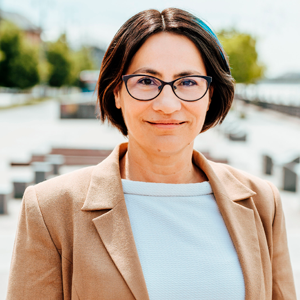 Borbála Takácsné Tóth
Borbála Takácsné Tóth
Opening Ceremony
Institutionality (I)
- Level 8: Naciones room 1 and 2
- Save to Google Calendar
- Save to My Agenda
In development
Overview of Integrated Resource Plans (IRP) and Performance Based Regulation (PBR)
Competitiveness (C)
- Level 6: Mangomarca room
- Save to Google Calendar
- Save to My Agenda
DESCRIPTION:
IRPs are a roadmap utilities use to plan out their acquisitions over 5, 10, or 20 years (or more), and PBR is a regulatory framework used to align the interests of the utility (and its management) with those of its customers. This education session will provide a high-level overview of traditional regulatory approaches to IRPs and PBR and emerging best practice.
 David Morton
David Morton
 Anna K. Fung
Anna K. Fung
Fostering strategic alliances for the energy transition: the mining and energy correlation
Energy Transition (E)
- Level 8: Naciones room 1 and 2
- Save to Google Calendar
- Save to My Agenda
DESCRIPTION:
Technological advances in the energy sector have a huge impact on the mining sector, which is a major energy consumer. In some countries, like Peru, mining represents a significant component of GDP. Considering that the incorporation of more clean energy sources in mining processes can help to decarbonize the economy and, in turn, the use of minerals, such as copper and lithium, can boost the development of storage and electromobility technologies, how can we turn the mining sector into an ally for the energy transition?
KEY QUESTIONS:
1) Why should we see renewable energy and mining as complementary markets?
2) How has the increase in non-conventional renewable energy impacted the costs of mining processes?
3) How can electricity demand from mining be managed efficiently?
4) Is there a single energy transition model in the sector or how have countries adapted to the gradual change considering their energy matrix?
5) What other emerging technologies exist, for example, to monitor energy consumption in the sector?
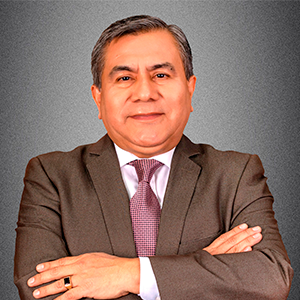 Omar Chambergo
Omar Chambergo
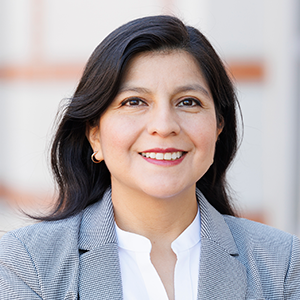 Tilsa Oré Mónago
Tilsa Oré Mónago
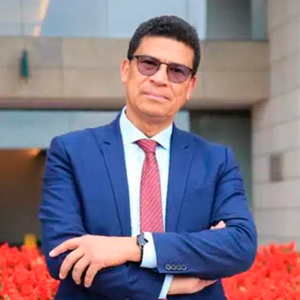 Luis Moreno
Luis Moreno
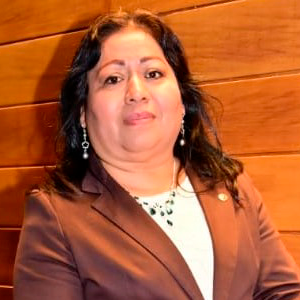 Lily Irma Ruiz Celi
Lily Irma Ruiz Celi
In pursuit of regulatory excellence
Institutionality (I)
- Level 8: Naciones room 1 and 2
- Save to Google Calendar
- Save to My Agenda
DESCRIPTION:
The energy regulator has two fundamental missions a) to establish or propose regulations to develop the legal framework through regulatory mechanisms to achieve energy or environmental policy objectives efficiently and as cost-effectively as possible and b) to supervise the functioning of energy markets and the performance of regulated activities. But, does the energy regulator have the conditions of independence, economic autonomy, specialization, and competence to perform these functions?
KEY QUESTIONS:
1) In the ethics, social and corporate responsibility fields, how can we solve conflicts of interest, and attend to accountability to comply efficiently with the energy and environmental policy objectives?
2) What participation and transparency mechanisms are in place for the regulatory processes?
3) What are the principal tools of the regulator to monitor processes performed by the energy agents?
4) What mechanisms the regulator uses to update technical and economic information, maintaining its degree of specialization?
5) What are the tools to inform society and protect consumers?
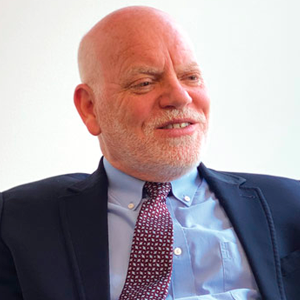 David Danner
David Danner
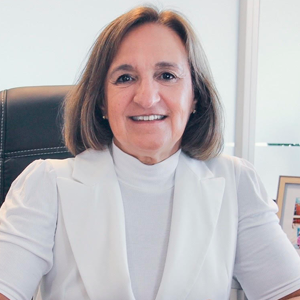 Silvana Romero
Silvana Romero
 Hasan Özkoç
Hasan Özkoç
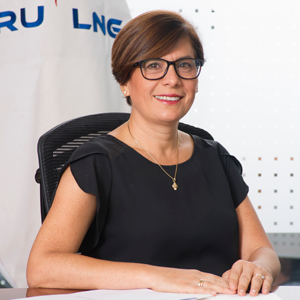 María Julia Aybar Solis
María Julia Aybar Solis
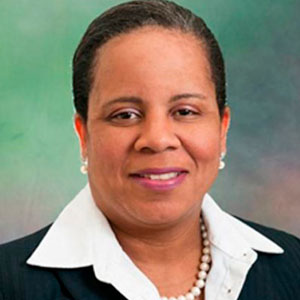 Kathleen Riviere-Smith
Kathleen Riviere-Smith
Key Note Speech II: Electrification of vehicular transportation: the transition from fossil fuels to rechargeable electric batteries
Institutionality (I)
- Level 8: Naciones room 1 and 2
- Save to Google Calendar
- Save to My Agenda
In development
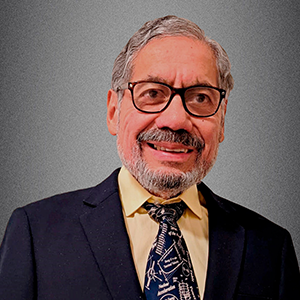 Jorge Seminario
Jorge Seminario
Official Photo
Institutionality (I)
- Level 8: Naciones room 1 and 2
- Save to Google Calendar
- Save to My Agenda
Official Photo
Icer Award
Institutionality (I)
- Level 8: Naciones room 1 and 2
- Save to Google Calendar
- Save to My Agenda
In development
 Charly Gatete
Charly Gatete
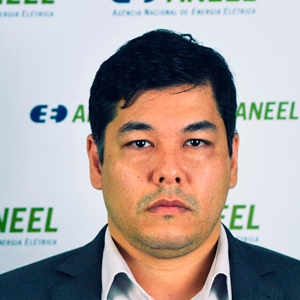 Marcio Andrey Roselli
Marcio Andrey Roselli
Energy access in the context of energy transition
Universal Energy Access (U)
- Level 6 : Pachacamac Room
- Save to Google Calendar
- Save to My Agenda
DESCRIPTION:
The session will address the challenges of energy access, considering the opportunities of energy transition -due to the diversification of energy sources- and uses that are based on technological advances. It will be discussed the role of regulation to promote the deployment of technology from the demand and supply sides; the different uses for the urban and rural sectors; the new electrification options linked to the charging infrastructure of electrical vehicles and applications such as cooking and heating. The session will close with a discussion of implementation proposals for developing countries such as the Latin American region.
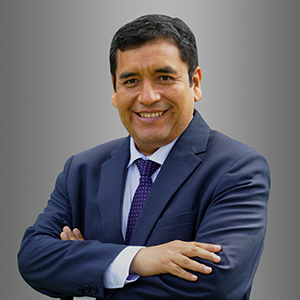 Rosendo Ramirez
Rosendo Ramirez
Powering the UN 2030 Agenda
Institutionality (I)
- Level 6: Mangomarca room
- Save to Google Calendar
- Save to My Agenda
DESCRIPTION:
Policy coordination is key to addressing the challenges of the energy sector. The 2030 Agenda for Sustainable Development, COP26, and The European Green Deal are just some examples of international coordination mechanisms in an increasingly interconnected world.
ICER's aim is to raise public and policy-maker awareness and improve their understanding of energy regulation and its role in addressing a broad spectrum of socio-economic, environmental, and market issues. But in what ways is international cooperation helping us to develop regulatory intelligence?
KEY QUESTIONS:
1) How are regulators addressing through international cooperation local and global challenges? (Case studies)
2) What is the role of International Technical Cooperation in accomplishing this? Experiences of agents, such as USAID, GIZ, KOICA, APCI, etc
 Simon Turmel
Simon Turmel
 Ana Isabel Moreno
Ana Isabel Moreno
 Andrew Flagg
Andrew Flagg
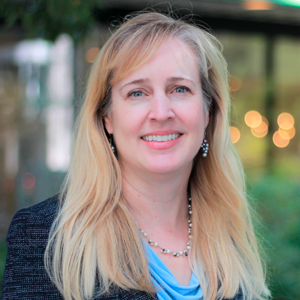 Erin Hammel
Erin Hammel
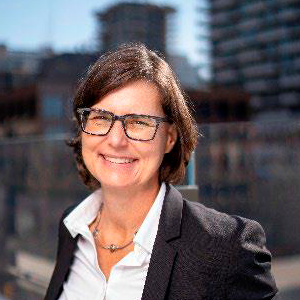 Carolyn Calwell
Carolyn Calwell
Innovation and Disruptive Technologies - The Regulator’s role and the dilemmas we face
Energy Transition (E)
- Level 6 : Pachacamac room
- Save to Google Calendar
- Save to My Agenda
DESCRIPTION:
The energy outlook is more complex than ever. Innovations and advancing technology represent some of the factors driving the energy transition and creating new standards. What are these new technologies? What role, if any, should utilities play in their development? And how should long-term technology plans be approached?
KEY QUESTIONS:
1) What assumptions are being made about the future of the energy sector? Which assumptions are already being challenged?
2) How can utilities and regulators move forward if the industry looks completely different in the future? Will they be ready to compete with these new dynamics and new players?
3) How can regulators and utilities proactively monitor these potential shifts within the fundamental nature of their business model?
 Yolanda Domingo
Yolanda Domingo
 Paulo Oliveira
Paulo Oliveira
 Tatsuya Shinkawa
Tatsuya Shinkawa
 Katherine L. Peretick
Katherine L. Peretick
 Claudio Martins de Souza
Claudio Martins de Souza
 Yolanda Domingo
Yolanda Domingo
Decarbonisation in Energy Regulators’ Decision Making
Energy Transition (E)
- Level 6: Mangomarca room
- Save to Google Calendar
- Save to My Agenda
How can energy regulators make decisions that help accelerate the energy transition, and do they have the mandate to do it?
Energy regulators around the world have many responsibilities; making sure that the lights stay on, that energy is fully accessible, and that consumers can afford it. But with the energy sector at the forefront of emission reductions to reach international climate changes commitments, and climate impacts putting energy infrastructure at risk, how can regulators make decarbonisation part of their day-to-day decision making? While many regulators do not have decarbonisation goals explicitly as part of their mandate, some have interpreted their mandates to include action on climate change, and some have sought changes to their legal basis in order to make decisions that accelerate the energy transition.
The Regulatory Energy Transition Accelerator is conducting a review into different ways that energy regulators take decarbonisation into account in their decision making. This panel will be an opportunity to explore some case studies from around the world of mandates that have changed, including climate impacts on energy systems in risk assessments, and incentivising carbon free electricity production.
KEY QUESTIONS:
1) How much room for manoeuvre do you have to interpret your own mandate, and how much do you rely on your government to set your objectives?
2) Can regulators assess climate risks in the same way that market risks are assessed?
3) What would decision making processes look like if decarbonisation was a key goal?
 Jane Dennett-Thorpe
Jane Dennett-Thorpe
 Allison A. Jean
Allison A. Jean
 Luis Enrique Gutierrez Tavarez
Luis Enrique Gutierrez Tavarez
 Alejandro Hernández
Alejandro Hernández
 Andrew Flagg
Andrew Flagg
 Andrew Flagg
Andrew Flagg
Ensuring reliable utilities - Houston do we have a problem?
Competitiveness (C)
- Level 6 : Pachacamac room
- Save to Google Calendar
- Save to My Agenda
DESCRIPTION:
Every year, electric and gas utilities' assets are threatened by the impact of climate change, and cybersecurity attacks. This poses substantial long-term risks to the reliability of utility service, also to public safety. This panel will explore how energy utilities and regulators can take a broad view of vulnerabilities and use collaboration, creativity, and resilience to overcome these challenges.
KEY QUESTIONS:
1) What are the essential resilience requirements for a rapidly evolving grid?
2) What is the regulator’s role?
3) How can we increase Distributed Generation while improving its resilience?
 Christian Zinglersen
Christian Zinglersen
 Ilaria Conti
Ilaria Conti
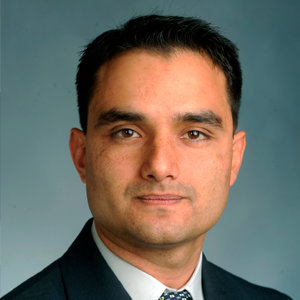 Hugo Pérez
Hugo Pérez
 David Morton
David Morton
 Erin Hammel
Erin Hammel
Towards Universal Energy Access – empowering and educating the consumer
Universal Energy Access (U)
- Level 8: Naciones room 3
- Save to Google Calendar
- Save to My Agenda
DESCRIPTION:
The net-zero (decarbonization) challenge is unprecedented – in scale, complexity, in speed. Smart grids allow consumers to be active participants in responding to this challenge, but the public may not support it without an understanding of the benefits. Solar PV and microgrids can help to connect communities without access to energy, but they may not be considered in utility planning and rates would become unaffordable without any type of subsidy. What can policy and regulation do to address these barriers?
KEY QUESTIONS:
1) To what extent are energy regulators involved in universal access to energy (access to electricity and access to clean cooking)?
2) Are communities without access to energy included in energy planning?
3) Are regulators able to establish simple rules for access, connection, and operation of photovoltaic home systems or mini grids?
4) Do regulators have the power to establish cross-subsidies in rates to help communities without access to energy?
5) Access is not just a grid connection – it is getting electricity when needed. How can regulators and utilities empower consumers to play an active role in energy security?
6) What mechanisms are available to regulators to facilitate access to and use of energy for vulnerable people?
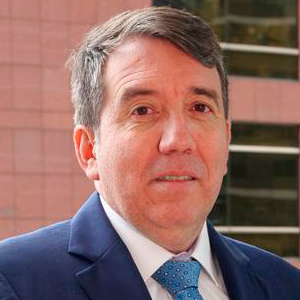 Jorge Valencia
Jorge Valencia
 Natalie McCoy
Natalie McCoy
 Luis Jesús Sánchez de Tembleque
Luis Jesús Sánchez de Tembleque
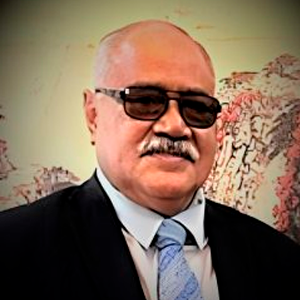 Siamelie Latu
Siamelie Latu
 Jennifer Nicholson
Jennifer Nicholson
Energy markets perspectives in a post-pandemic world
Competitiveness (C)
- Level 8: Naciones room 3
- Save to Google Calendar
- Save to My Agenda
DESCRIPTION:
In times of depleting fossil fuel-based sources of energy, the competitiveness of new sources of energy becomes crucial. To identify other energy sources and methods by which electricity can become more competitive and accessible to consumers, it is important to analyze the global energy market conditions and trends to see how sustainable policies and economic power can help us to reach more consumers worldwide.
Hence, there is a need to understand energy markets comprehensively. Furthermore, we need to address risk management and regulations for new regulatory interventions in a post-pandemic world considering different geopolitical scenarios. Moreover, we need to address the impact of energy reforms, cutting-edge technology, and climate ambitions.
KEY QUESTIONS:
1) In which direction is the energy sector moving?
2) Has the quest to tap the cheapest source of energy changed power generation trends?
3) How have the pandemic and the geopolitical scenario impacted the perspectives of energy markets? What is the impact in your region?
4) How are regulators addressing climate risk management and greenhouse gas emission reduction (Net Zero)?
5) What is the future of energy demand? How are governments and consumers changing their energy consumption?
 Anna K. Fung
Anna K. Fung
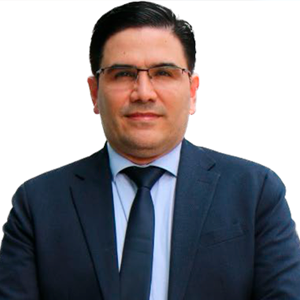 Fernando Alfredo Moscoso Lira
Fernando Alfredo Moscoso Lira
 Carlos Pascual
Carlos Pascual
 Elzbieta Rabalska
Elzbieta Rabalska
 Hasan Özkoç
Hasan Özkoç
Renewable energies and energy storage
Competitiveness (C)
- Level 6: Mangomarca room
- Save to Google Calendar
- Save to My Agenda
Technical Coordinator:
Ibero-American Associations of Energy Regulators, ARIAE
DESCRIPTION:
Energy storage is fundamental for the integration of non-conventional renewable energy into the future low-emission power system. Its task is to store excess electricity and make it available to the power system when it is most needed to balance supply and demand and stabilize the grid.
To this end, although traditional Reversible Pumped-Storage Plants can be used, given the limited resources of this kind, there are developments for future use, such as lithium batteries, compressed air systems, green hydrogen, and solar thermoelectric systems with molten salt storage, among others.
In particular, sequentially connected batteries are undergoing a technological revolution at macro (connected to the transmission grid) and micro levels (associated with self-generation and self-consumption).
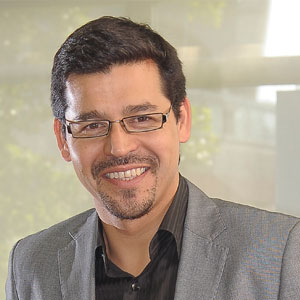 David Watts
David Watts
The dynamics of water & energy regulation interdependency
Energy Transition (E)
- Level 6: Mangomarca room
- Save to Google Calendar
- Save to My Agenda
DESCRIPTION:
The dynamics of economic growth and climate change impact the availability of energy and water resources. Water is vital not only for daily human use but also is present in almost every energy production process. According to the World Bank, electricity represents "5 % to 30% of the total operating cost of water and sewage utilities (World Bank, 2012), but in some countries such as India and Bangladesh, it can be as high as 40%" (WAAP, 2015). Furthermore, energy is used to extract, convey, and deliver water of appropriate quality for human use and wastewater treatment before their return to the environment. Both areas have historically been regulated and managed separately, although an integrated planning approach may be useful to use these resources more efficiently.
Examples of water-energy linkages include providing access under growing demand conditions, combined power and desalination plants, combined heat and power plants, utilization of geothermal resources, and energy recovery from wastewater.
KEY QUESTIONS:
1) Is it possible for synergies to exist for water and energy regulation?
2) Should there be one national regulator for energy and water or should they be separate entities? Are consumer's expectations different for each sector?
3) Is it necessary to have a different regulatory methodology for water and energy?
4) What is the future of energy and water utilities? Different? Similar?
5) How can we promote efficiency in both sectors?
 Rota Šņuka
Rota Šņuka
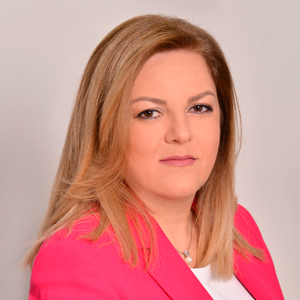 Andrijana Nelkova Chuchuk
Andrijana Nelkova Chuchuk
 Veli-Pekka Saajo
Veli-Pekka Saajo
 Chenée Riley
Chenée Riley
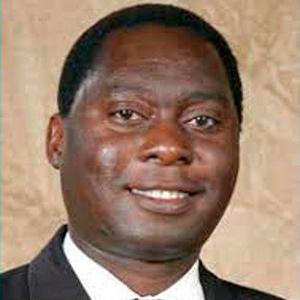 Elijah Sichone
Elijah Sichone
Shaping the energy landscape - Building trust with stakeholders
Universal Energy Access (U)
- Level 8: Naciones room 3
- Save to Google Calendar
- Save to My Agenda
DESCRIPTION:
Stakeholder interest and engagement in energy projects continue to increase as do their expectations about regulators and utilities, calling for greater transparency. Renewable energies have garnered attention as examples of projects that engender public, and community participation. Broader participation helps to raise issues associated with the presence or absence of energy projects and the ensuing effect on members of a community. In this regard, some of the challenges we are currently facing are identifying barriers to participation and ensuring that mechanisms are in place for equity in participation.
KEY QUESTIONS:
1) What types of projects have the most participation?
2) Are utilities equipped to manage public participation?
3) How do we define community participation? What are the benefits? Are there any drawbacks?
4) How can regulators facilitate participation? What models are worth emulating?
5) What metrics are there that show correlations between community participation and the success of energy projects?
 Sharleen Gale
Sharleen Gale
 Maria Elena Martín Morales
Maria Elena Martín Morales
 Bruno Meyer
Bruno Meyer
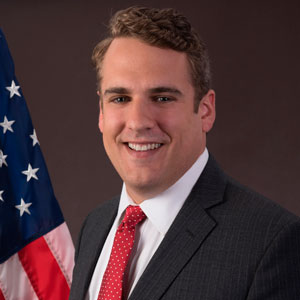 James Danly
James Danly
 Milene Yarixa Nuñez Espinoza
Milene Yarixa Nuñez Espinoza
Are regulatory reforms the final leap?
Competitiveness (C)
- Level 6 : Pachacamac room
- Save to Google Calendar
- Save to My Agenda
DESCRIPTION:
The energy sector reforms seek to improve a regulatory framework that provides predictability and legal certainty. While the focus of the first wave of reforms was to ensure energy security and fiscal stability, nowadays universal energy access and energy transition play a key role.
Considering the above, Peru created the Multisectoral Commission for the Reform of the Electricity Subsector in 2019. With the Reform, Peru is ready to keep up with the global challenges, and invites other actors to analyze, how have local and regional particularities nuanced the reform processes in other parts of the world?
KEY QUESTIONS:
1) The growing penetration of renewable energies and the decarbonization process to comply with climate agreements are driving a series of political reforms, but what institutional arrangements are necessary to guarantee the sustainability of these changes?
2) How is technology accelerating reform processes worldwide (distributed generation, storage, electromobility, digitization, etc.)?
3) What role does the consumer or prosumer play in the design of these new markets?
4) How do we ensure that reforms meet social objectives?
 Natasha Avendaño García
Natasha Avendaño García
 Jerson Reyes Sanchez
Jerson Reyes Sanchez
 Paul Súmar
Paul Súmar
 Cândida Patrícia Veríssimo e Costa de Oliveira
Cândida Patrícia Veríssimo e Costa de Oliveira
 Francisco Salazar
Francisco Salazar
ERRA - Emerging Markets Association meeting (invitation only)
Institutionality (I)
- Level 4: Manchay room
- Save to Google Calendar
- Save to My Agenda
In development
High Level Round Tables A: Renewables and their market integration with a more technical focus
Competitiveness (C)
- Level 5: Ichma room 1
- Save to Google Calendar
- Save to My Agenda
In development
 Alberto Pototschnig
Alberto Pototschnig
High Level Round Tables B: Regulatory Impact Analysis
Institutionality (I)
- Level 5: Ichma room 2
- Save to Google Calendar
- Save to My Agenda
In development
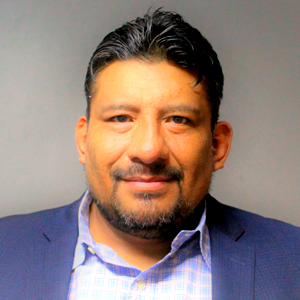 Andrés Blancas Martinez
Andrés Blancas Martinez
RETA meeting
Institutionality (I)
- Level 4: Manchay room
- Save to Google Calendar
- Save to My Agenda
In development
Closing Ceremony
Institutionality (I)
- Level 8: Naciones room 1 and 2
- Save to Google Calendar
- Save to My Agenda
In development
Secure and sustainable - opposites or mutually reinforcing goals?
Universal Energy Access (U)
- Level 6: Mangomarca room
- Save to Google Calendar
- Save to My Agenda
DESCRIPTION:
The energy transition is an absolute necessity, but we often forget it or keep it on the back burner when discussing security of supply (SoS) and, in particular, the fear of supply disruption. On the road to net zero and in a net-zero energy system, security of supply will remain as crucial as today - if not more - although it will likely show up in different ways and use other tools. While it is challenging to rethink SoS in this new framework, the opportunities for the energy transition are just as numerous. Regulators should contribute to the development of an energy system that ensures SoS as an outcome of the system rather than viewing it as a separate service requiring extra remuneration.
KEY QUESTIONS:
1) What knee-jerk reactions should be avoided in a supply crisis (because they are counter-productive in the medium to long term), and which tools are there that reinforce both SoS and the energy transition?
2) How can the energy systems of the present and the future marry SoS and the energy transition?
3) How can energy regulation harness the potential of energy efficiency towards SoS?
4) What role do prosumers and micro-generation play?
5) What market model could give the right signals for net-zero SoS in the long term (investments) and the short term (supply)? How to avoid that our energy systems are slowly overwhelmed by subsidies and support payments?
 Pedro Verdelho
Pedro Verdelho
 Anna Collyer
Anna Collyer
 Dan Scripps
Dan Scripps
 S’khumbuzo S. Tsabedze
S’khumbuzo S. Tsabedze
 Susana Cazorla
Susana Cazorla
Developing the game rules for cross-border integration
Competitiveness (C)
- Level 6 : Pachacamac room
- Save to Google Calendar
- Save to My Agenda
DESCRIPTION:
Improving the level of interconnections between countries and enabling them to move towards greater integration is an important milestone for energy transition. This objective resulted in the development of regional energy markets as one of the top energy priorities. In this regard, there are two strategic directions to improve cross-border integration: in the short term, the focus is on regulatory convergence, while the long-term focus is on investment and interconnection development.
Interconnection development is a multiple-year process that starts with the identification of a need. This need can be a result of a new energy generation, problems of congestion, demand growth, or significant changes in the topological grids.
Going ahead with further cross-border integration requires a high level of coordination among different parties, namely TSOs, regulators, and administrations. The development of cross-border interconnections and the integration of regional markets is a long process that requires stability in terms of its regulatory framework and a well-designed long-term actions plan.
KEY QUESTIONS:
1) How can countries converge their regulations to achieve regional integration?
2) How should these interconnections be developed? What is the role of energy planning in your region?
3) And what can we do to deepen the regional dialogue between regulators, institutions, and network operators?
 Alison Archer
Alison Archer
 Alda Ozola
Alda Ozola
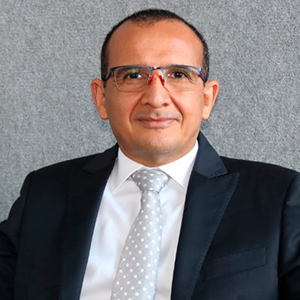 Rodrigo Rodriguez
Rodrigo Rodriguez
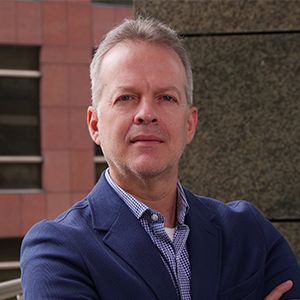 José Fernando Prada
José Fernando Prada
 Tony Gebrayel
Tony Gebrayel
Being an independent regulator
Institutionality (I)
- Level 8: Naciones room 3
- Save to Google Calendar
- Save to My Agenda
DESCRIPTION:
The energy transition requires a stable regulatory environment that promotes innovation and investments. The role of energy regulators in retail market monitoring is more important than ever, and the need to strike a balance between investors, state intervention and consumer protection is on the rise. Ensuring good regulatory practices is an important task and should be maintained by a comprehensive strategy. Some elements consist of avoiding external influences from stakeholders. This could be achieved by the regulator’s independence, which should be covered by protecting it from the influence of national and regional governments and industries. In addition, the legislative framework is essential to set the environment in which the regulator is supposed to work. A regulator's duties and powers should help to identify a minimum set of competences defining its specific responsibilities to promote competition and consumer empowerment.
Effective organization of the regulator requires clear decision-making process and actions and an internal operational structure with distinct roles and responsibilities. The regulator should be able to enforce the regulations it passes since enforcement involves ensuring compliance with the rules by market participants and regulators. Lastly, transparency and accountability are cornerstones in the work of the regulators and should be maintained at all times.
KEY QUESTIONS:
1) How can countries enhance the independence of their regulators?
2) And what additional benefits would these actions guarantee if they are implemented properly?
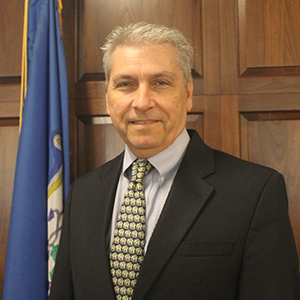 Michael Caron
Michael Caron
 Luciano Paulin
Luciano Paulin
 Annegret Groebel
Annegret Groebel
 Agnes Maria de Aragão da Costa
Agnes Maria de Aragão da Costa
 Natasha Avendaño García
Natasha Avendaño García
 Tony Gebrayel
Tony Gebrayel
Building the next-generation mix of Energy Resources
Competitiveness (C)
- Level 8: Naciones room 1 and 2
- Save to Google Calendar
- Save to My Agenda
DESCRIPTION:
The energy sector and utilities are in the midst of a transition to the use of clean energy. The success of that transition depends to a large extent on the ability of markets to support required investment and supply reliable and affordable energy to users while increasing reliance on renewable energy. This panel will explore fundamental issues and solutions to address this challenge.
KEY QUESTIONS:
1) What strategies should be employed to maintain supply reliability while integrating more renewable energies?
2) Do regulators need to rethink how markets are structured? Or how reliability services are defined and procured?
3) What should regulators consider to ensure that power grids transformation in their jurisdictions can deliver clean and reliable energy?
 Annegret Groebel
Annegret Groebel
 Clare Savage
Clare Savage
 Alda Ozola
Alda Ozola
 Bruno Meyer
Bruno Meyer
 Francisco Salazar
Francisco Salazar
 Anna K. Fung
Anna K. Fung
ICER Steering Committee
Universal Energy Access (U)
- Level 4: Manchay room
- Save to Google Calendar
- Save to My Agenda
In development
Utility ownership of ‘behind the meter’ assets
Competitiveness (C)
- Level 6: Pucllana room
- Save to Google Calendar
- Save to My Agenda
DESCRIPTION:
The electricity industry is in the midst of a transformation, as technology and innovation disrupt traditional models from generation to beyond the meter. Resources ‘beyond the meter’ (including customer demand side response, energy efficiency programs and distributed generation) may be able to compete ‘head to head’ with utility owned supply side options. A question for regulators is what role should the utility play in their development.
Join us to discuss regulatory frameworks and case studies as regulators grapple with these issues. Illustrative case studies will include utility investment in energy efficiency programs, advanced meter infrastructure, EV charging stations, thermal energy systems, LNG/CNG fueling stations and more.
 Yolanda Domingo
Yolanda Domingo
 Jennifer Nicholson
Jennifer Nicholson
Enabling universal access to electricity
Universal Energy Access (U)
- Level 6: Mangomarca room
- Save to Google Calendar
- Save to My Agenda
DESCRIPTION:
The training module will be structured in two parts. In the first part, after providing a brief overview of the current situation with respect to access to modern energy (electricity), the module will identify the most affected segments of the population. The emphasis will then be put on the distribution grid, which is where access issues are most frequently identified, with the quest for a valid model for overcoming these issues. The elements for such a model will be spelt out, together with metrics to assess progress and identify flaws.
In the second part, the use of regulation for enabling universal access will be proposed. In particular, an approach based on adapting the concession model for distribution activities will be presented and discussed. Finally, the module will briefly consider how distribution operators could be incentivised to enable and promote economic development.
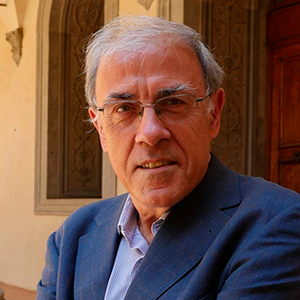 Ignacio J. Pérez Arriaga
Ignacio J. Pérez Arriaga
Connectivity and Integration to Support Regional Energy Markets
Institutionality (I)
- Level 6 : Pachacamac room
- Save to Google Calendar
- Save to My Agenda
DESCRIPTION:
Energy regulators around the world are increasingly focused on connectivity and integration, especially in the context of developing regional energy markets. Regional energy markets play an important role in improving the energy security of countries by bolstering the resources and systems beyond local or national borders. They also help ensure that consumers receive reliable and affordable electricity while promoting increased use of clean energy resources. As new investors and traders enter the markets, it behooves energy regulators to promote coordinated regulatory frameworks to facilitate investments and increased access. This session will discuss key regulatory concepts and structures that various state-level regulators in the U.S. have developed with each other and with the Federal Energy Regulatory Commission (FERC). It will further examine the strong role that regulators can play in promoting regional market integration with a case study from Southeast Europe. Just as utilities have significantly increased their coordination efforts to address efficiencies, especially in regional transmission organizations (RTOs), regulators have, likewise, developed a number of working-level systems to strengthen the regional regulatory frameworks.
 Marko Bislimoski
Marko Bislimoski
 Hisham Choueiki
Hisham Choueiki
 Dan Scripps
Dan Scripps
The race towards e-mobility - a new era?
Energy Transition (E)
- Level 6 : Pachacamac room
- Save to Google Calendar
- Save to My Agenda
DESCRIPTION:
The drive toward electric vehicles has caused regulators and industry alike to rethink issues such as what constitutes a public utility, conventional rate design, and statutory authority. Where we draw the line in the sand (or on the road) is changing. How can we ensure that everyone stays in their lane when the roadmap keeps changing?
Potential grid impacts from electromobility include the potential for new generation requirements, a reshaped load curve, affect on distribution networks, and the need for better grid management approaches
KEY QUESTIONS:
1) How do we define electromobility (e.g., cars, bikes, buses, trains)? What are the models of statutory authority? And how does this affect the regulator?
2) Has the increased demand for EVs as an effect of the pandemic and the increased fuel cost put more pressure on regulators? In what ways?
3) Are EV charging stations public utilities?
4) What do the data on electromobility and emissions show us, and to what extent should regulators be involved?
5) How do we ensure equity in siting charging stations?
6) Should stranded assets be a concern, or is it too early to tell?
7) What strategies are needed to engage customers (e.g., optimal charging periods during off-peak times, locations of new charging stations, etc.)?
8) Which rate design models work best for EVs?
9) What questions should regulators be asking to prevent EV cyber attacks?
10) Why should regulators care about interoperability and standardization?
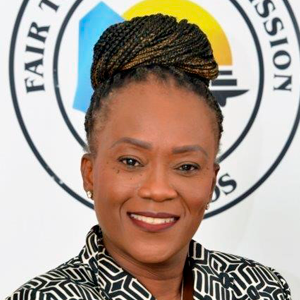 Marsha Atherley-Ikechi
Marsha Atherley-Ikechi
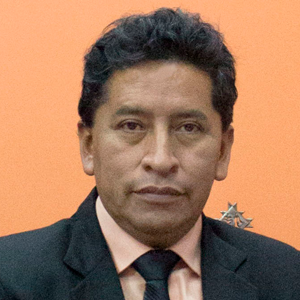 Victor Choque
Victor Choque
 Andrew Giles Fay
Andrew Giles Fay
 Charles Esser
Charles Esser
 Erin Hammel
Erin Hammel
Rethinking Infrastructure Development for 2025
Universal Energy Access (U)
- Level 6 : Mangomarca room
- Save to Google Calendar
- Save to My Agenda
The Women in Energy (WIE) Initiative of ICER, is contributing to the WFER with this meaningful conversation on the future of infrastructure development for 2025. This session is a statement about the importance of gender mainstreaming as it helps us raise new questions to design future and inclusive solutions.
What will the infrastructure development needs look like (for EU/the world) in 2025 and beyond to remain as a reliable pillar for different energy sources? What does it take from a leader with a growth mindset to tackle the right questions to address associated challenges, especially in the light of digitalization, geopolitics, regionalization, climate change and the 2030 Agenda?
The session will include relevant questions to design proper and individual Network Development for all different future societies. Rather than providing answers, the WIE wants to provide a space to reflect upon the direction of the sector with the support of relevant and experienced experts.
 John Bear
John Bear
 Borbála Takácsné Tóth
Borbála Takácsné Tóth
 Susana Cazorla
Susana Cazorla
 Annegret Groebel
Annegret Groebel
The art of communicating complex regulation
Institutionality (I)
- Level 8: Naciones room 3
- Save to Google Calendar
- Save to My Agenda
DESCRIPTION:
Regulatory efficiency should not only consider performance indicators for specialized actors in the energy sector and government institutions but regulators' ability to reach wider audiences to ensure reliable and sustainable energy supply.
The role of economic regulators is often confused with political agents, raising false expectations on the scope of action economic regulators have under free market conditions. The Ibero-American Association of Energy Regulatory Entities (ARIAE) recently launched an initiative which gathers social communication areas to share experiences and strategies to better perform their functions. This exercise helped communicators to reflect on the challenges of multicultural audiences, the importance of developing educational training programs, and the importance of addressing to the new digital user.
KEY QUESTIONS:
1) How can we better communicate our role in society to empower consumers?
2) How to communicate complex topics?
3) Do energy consumers really know the options available to reduce their energy bill, save energy, and contribute to the decarbonization of the economy? If not, what can energy regulators do to improve the social communication of energy?
4) How have we faced the relation between the regulator and consumers during the pandemic?
5) Examples of technological innovations to create user-friendlier apps to interact with new digital users?
 Carolina Mora
Carolina Mora
 Greg Lyle
Greg Lyle
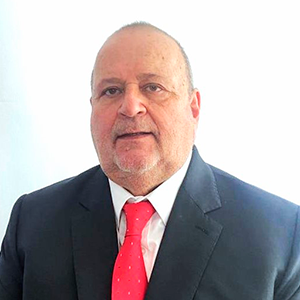 Jesús Roberto Tamayo Pacheco
Jesús Roberto Tamayo Pacheco
 Maia Melikidze
Maia Melikidze
Micro-grids "Islands of power", energy planning and other energy access solutions
Universal Energy Access (U)
- Level 8: Naciones room 1 and 2
- Save to Google Calendar
- Save to My Agenda
DESCRIPTION:
Universal energy access by 2030 is one of the United Nation's sustainable development goals.
According to the World Bank, "globally, the number of people without access to electricity declined from 1.2 billion in 2010 to 759 million in 2019, with decentralized electrification solutions gaining relevance through the use of renewable energy."
Increasing attention is being paid to micro-grids as they can be connected to a central grid and use its services. Furthermore, microgrids are seen as a way to help rural communities and developing countries to provide energy access solutions. Moreover, they are more resilient systems as they can be island off from the central grid and be deployed at a several different scales (e.g., from a single building to an entire municipality).
KEY QUESTIONS:
1) What role will microgrids play in achieving universal energy access?
2) Aside from microgrids, what other viable solutions should be considered to achieve greater access?
3) How close are we to achieving the goal of ennergy access by 2030? And how has the pandemic affected this goal?
4) How will renewables help to accelerate progress towards greater access? What types of regulatory reforms are needed?
5) In what ways should regulators be pushing utilities? How can we [regulators] encourage market-driven reforms?
 Agnes Maria de Aragão da Costa
Agnes Maria de Aragão da Costa
 Dan Scripps
Dan Scripps
 Lorraine Akiba
Lorraine Akiba
 Erin Hammel
Erin Hammel
Networking meeting
Institutionality (I)
- Level 4: Terrace
- Save to Google Calendar
- Save to My Agenda
Networking meeting
